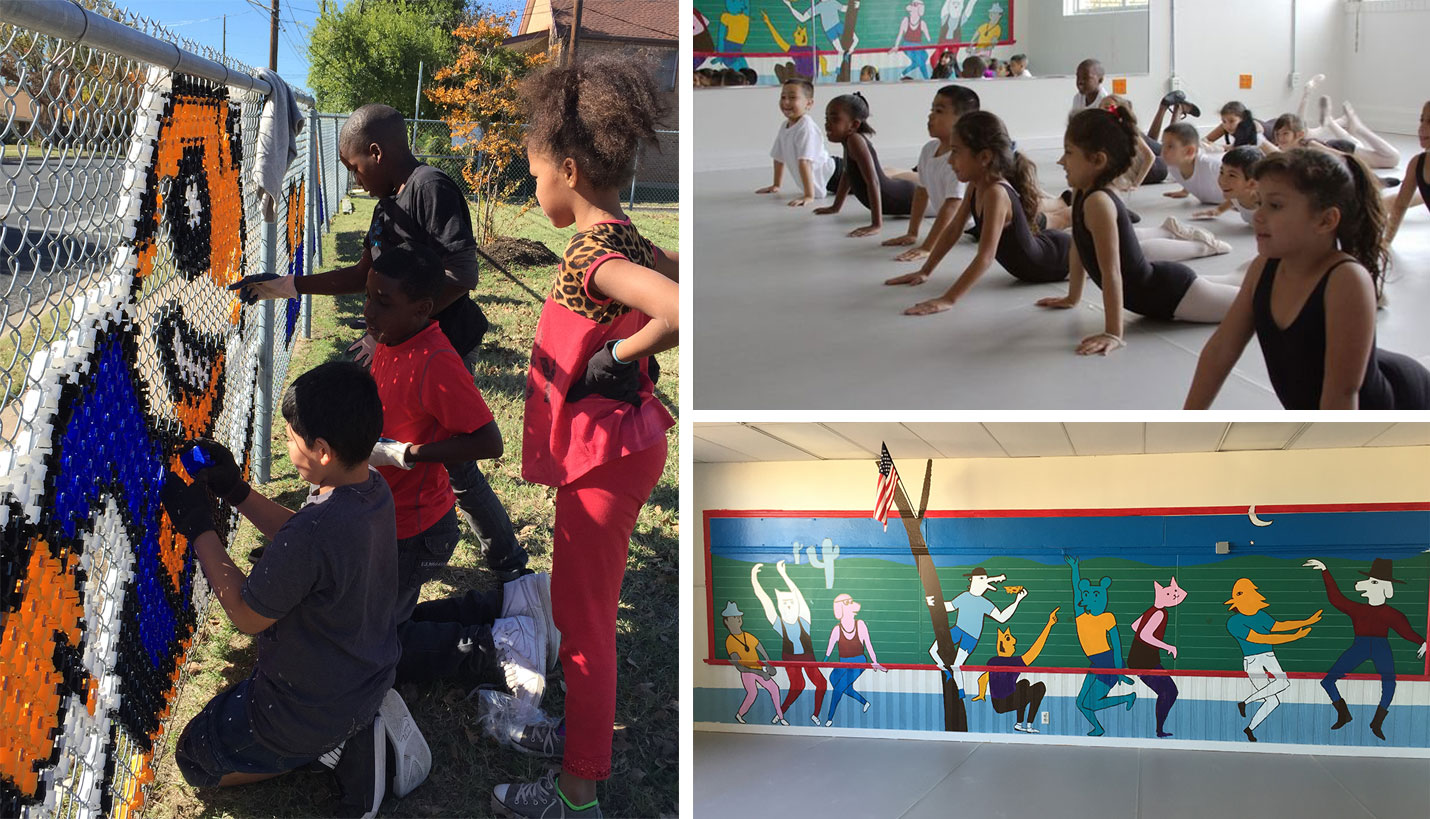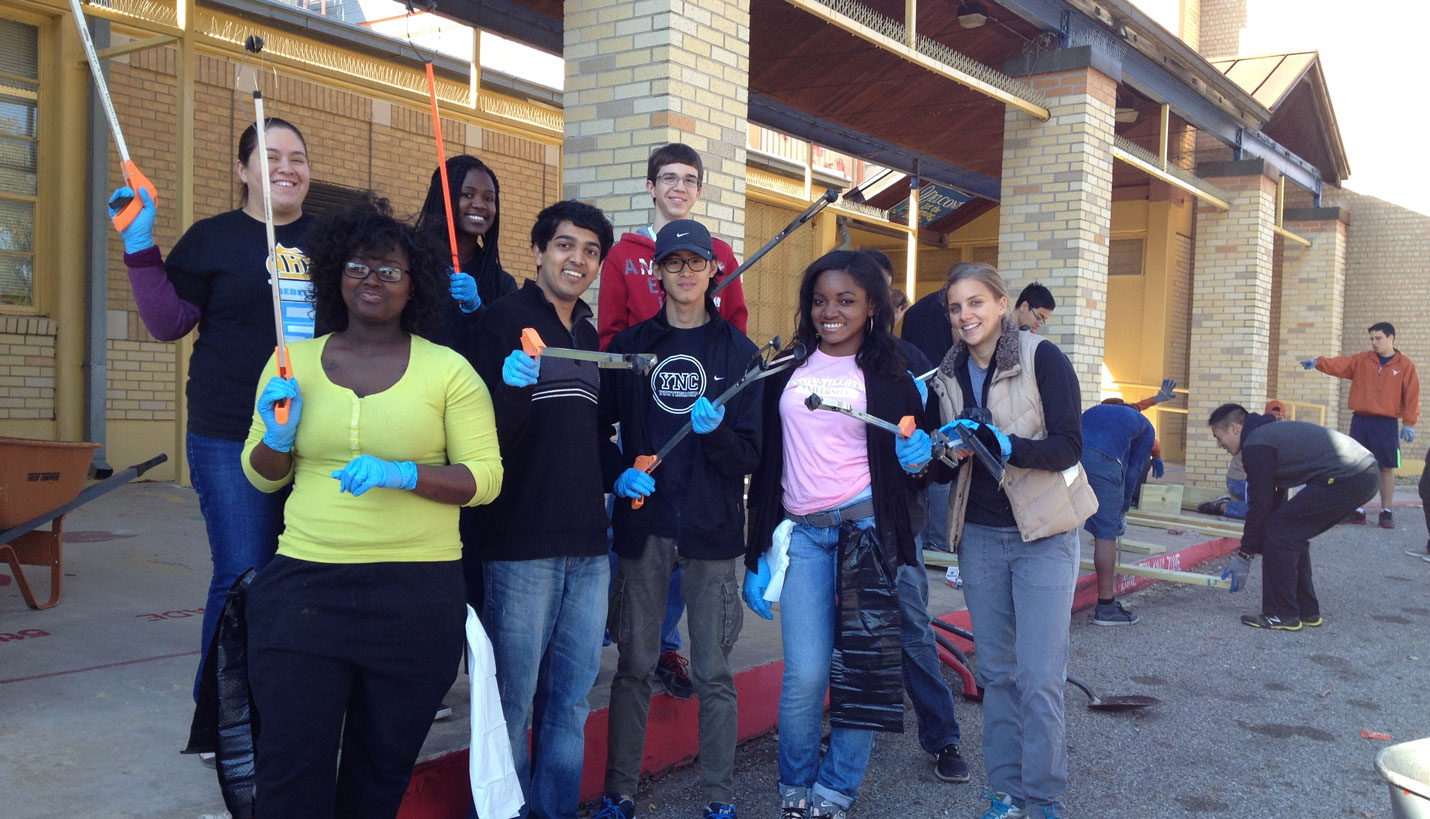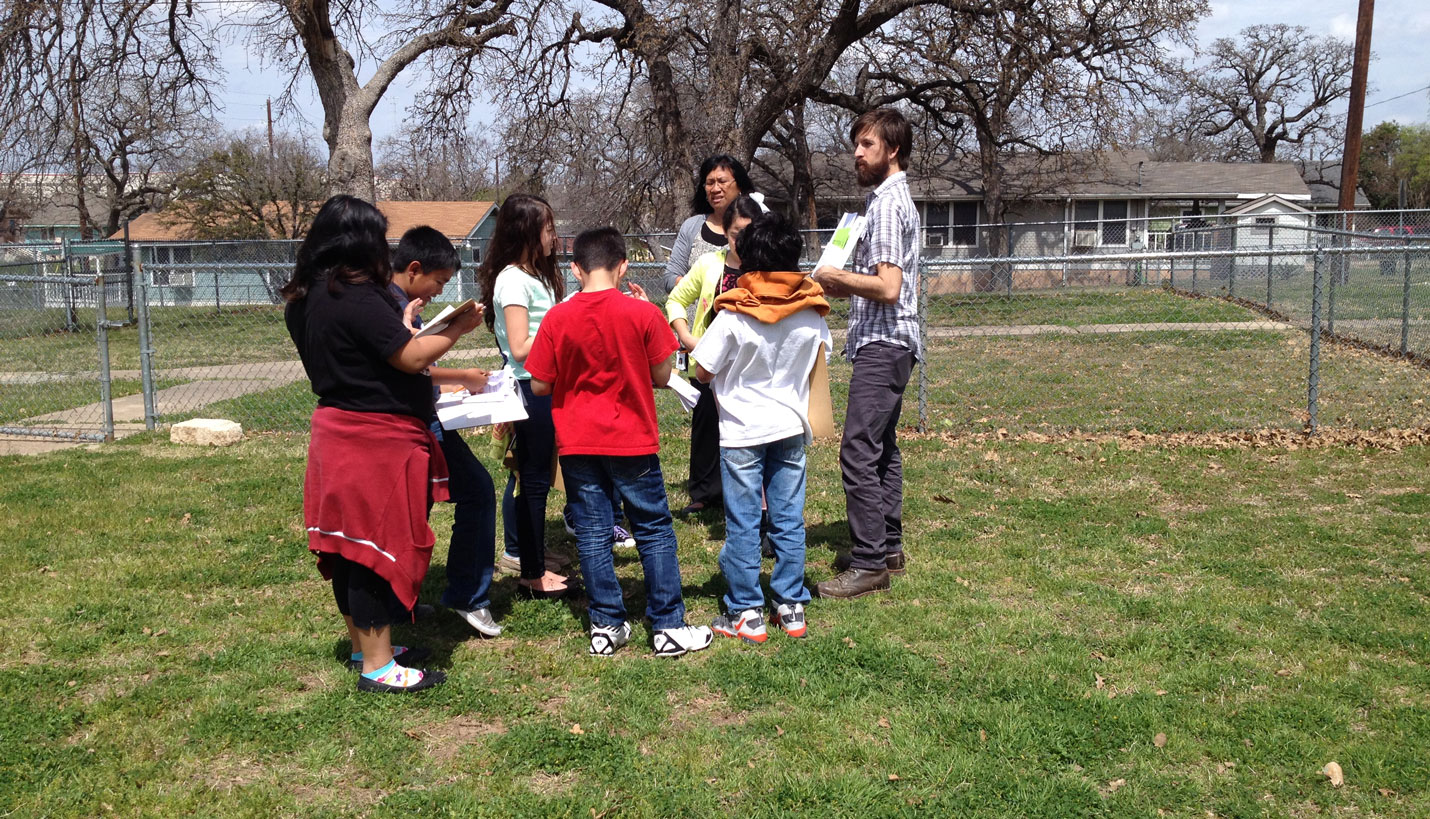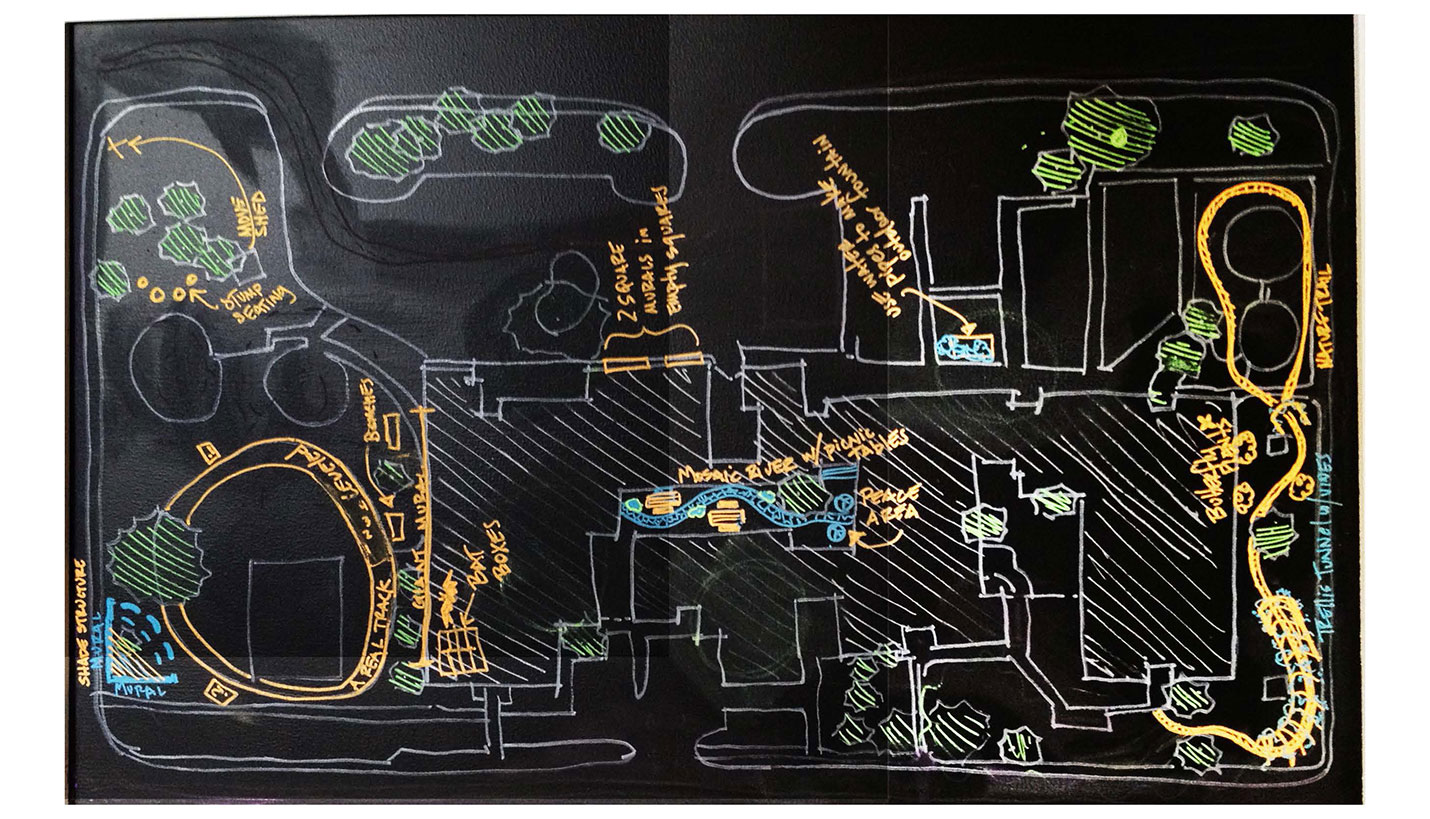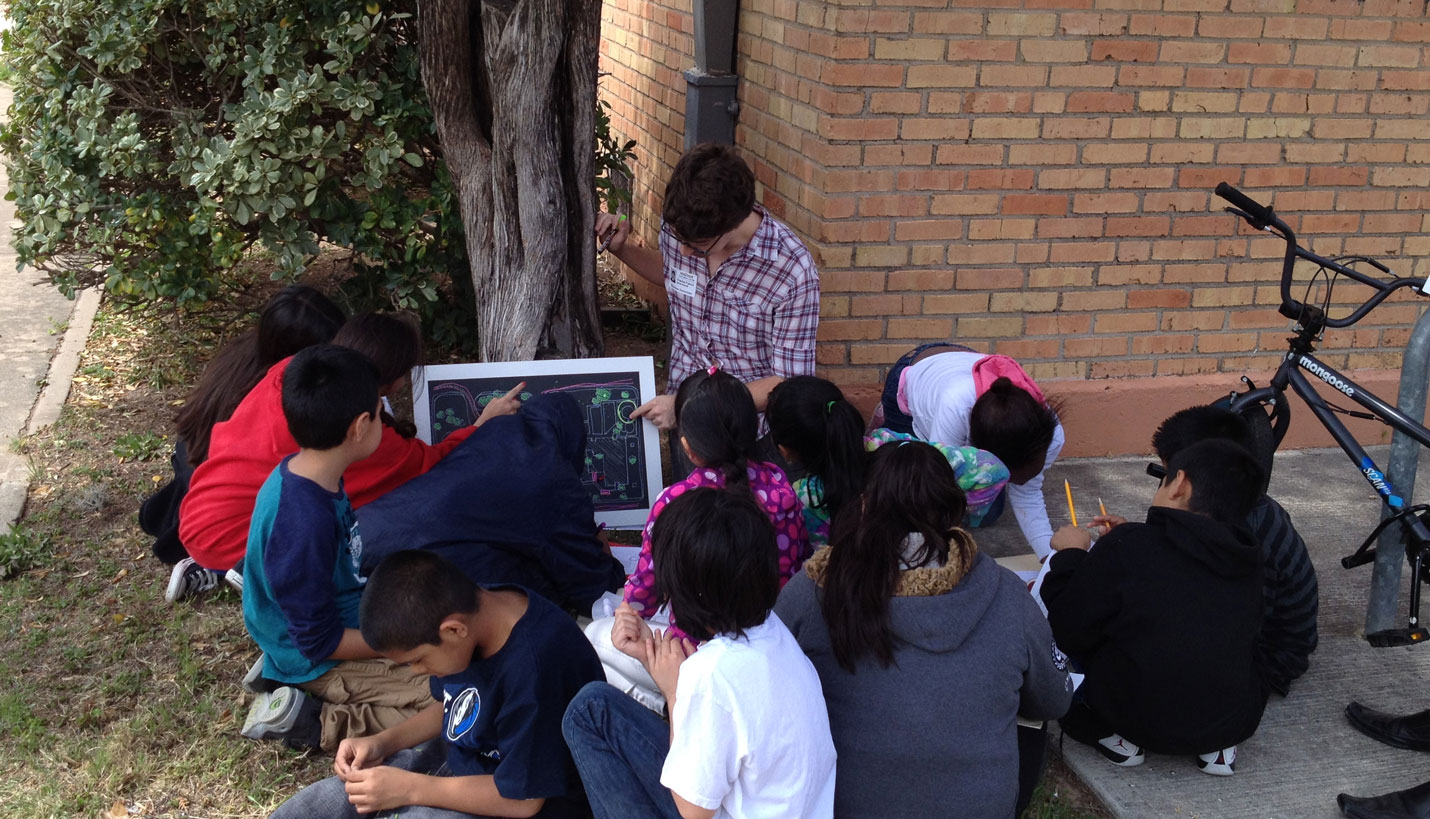The Importance Of How – The Blackshear Schoolyard Project
When a designer has to tackle a problem, whether it be detailing or site planning, a great amount of time is consumed by answering the question of ‘how’ rather than ‘what’. I don’t want to belittle the importance of identifying and defining the problem in design, but the majority of my time is spent considering the infinite possibilities of ‘how’. That was quite evident when I began volunteering on a project to develop a new schoolyard master plan for the neighborhood elementary school Blackshear back in the fall of 2013.
Rather than aim for a good short-term, small scope fix to provide what the school needed, we laid the groundwork for a long-term process of how we could continue to provide it with necessary resources. It was clear that how we proceeded could impact both students and volunteers, so we began gathering stakeholder information from the community, staff, and students with the help of neighborhood organizations, staff, and Blackshear Principal Betty Jenkins. We adapted a National Wildlife Federation lesson plan into a guide for an evaluation of the existing schoolyard conditions that students could use, and we set up a session with local architects to model and design different concepts with the help of the students.
In the summer of 2014, local landscape architecture office Mark Word Design generously donated their design services to create a phased master plan of the schoolyard. The volunteer group, which included hundreds of participants from Entrepreneurs Foundation of Central Texas in partnership with AISD’s Facilities team, restored the track, repainted the interior, installed classroom seating areas, and re-shaped the student pick-up area.
Over the winter, the first phase of tree planting took place with contributions from the City of Austin Urban Forestry, AISD’s Forester, and a number of community organizations. Just this past spring, AISD installed much needed benches, which were fabricated and donated by Steelhouse mfg and Eastside Lumber.
During this process, the principal of Blackshear informed me how one parent stood at the entry of the school overcome with tears from the community’s generous outpouring of support. She was surprised by how many people were willing to donate their time and services despite not having children at Blackshear. It truly showed that focusing on the ’how‘ can have a great impact.
A good ’how‘ takes more time and patience than a quick fix. It takes hours of free time, energy and passion - but ultimately the reward is exponentially better. By taking the time to gather stakeholder input, seek community sponsors, and engage local designers and fabricators – we forged new, lasting relationships between the school and the community. We created rewarding and exceptional moments between students, staff, and volunteers.
As we consider and plan how we can design and construct a raingarden and an amphitheater, we strive to build and strengthen this network of partnerships; by doing so, we build longevity into a model of shifting pieces and ensure Blackshear will have the ties it needs to continue to grow and improve.
You can read more information about the project or view an interactive masterplan on Diana Su's website.
Contributed By
Diana Su
07/29/2015
People
Related Posts
- Design That Makes A Difference: The Blackshear Schoolyard Project
- Connecting the Community at Blackshear
- Pagers on the Front Lines of COVID-19 Effort
- Porch With A Home - Pro Bono Tiny Sustainable Design
- Teaching Denver High School Students
- We Care Holiday Fun for Kids
- Actively Promoting AIA Chapters



